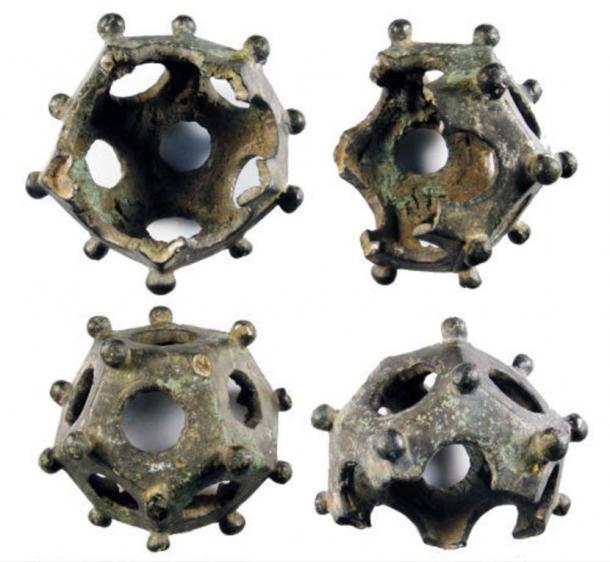
The Roman dodecahedron is a small, hollow object made of bronze or (more rarely) stone, with a geometrical shape that has twelve flat faces. Each face is a pentagon, a five-sided shape. The Roman dodecahedra are also embellished with a series of knobs on each corner point of the pentagons, and the pentagon faces in most cases contain circular holes in them. More than 200 years after they were first discovered, researchers are no closer to understanding the origin and function of this mysterious object.
The Roman dodecahedra date from the 2nd or 3rd centuries AD, and typicall range from 4cm to 11cm in size. To date, more than one hundred of these artifacts have been found across Great Britain, Belgium, Germany, France, Luxembourg, Netherlands, Austria, Switzerland, and Hungary.
